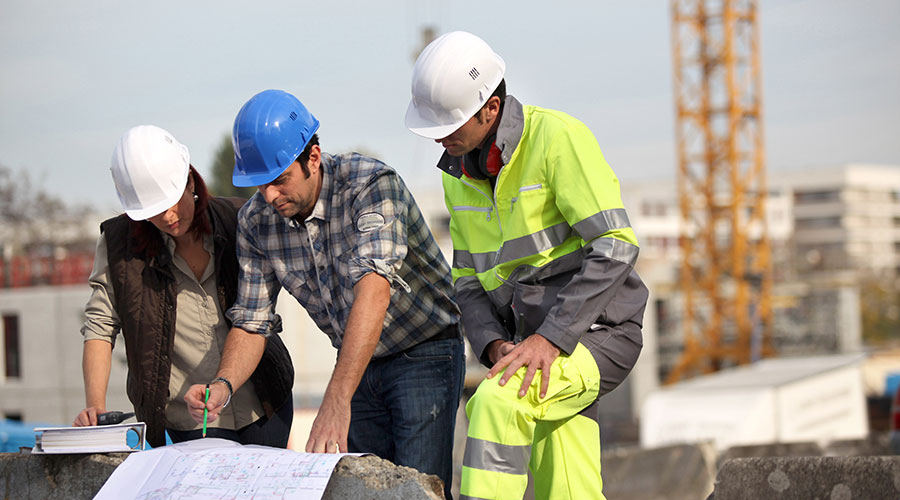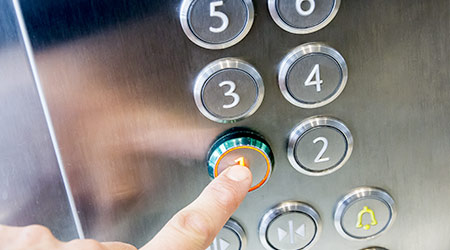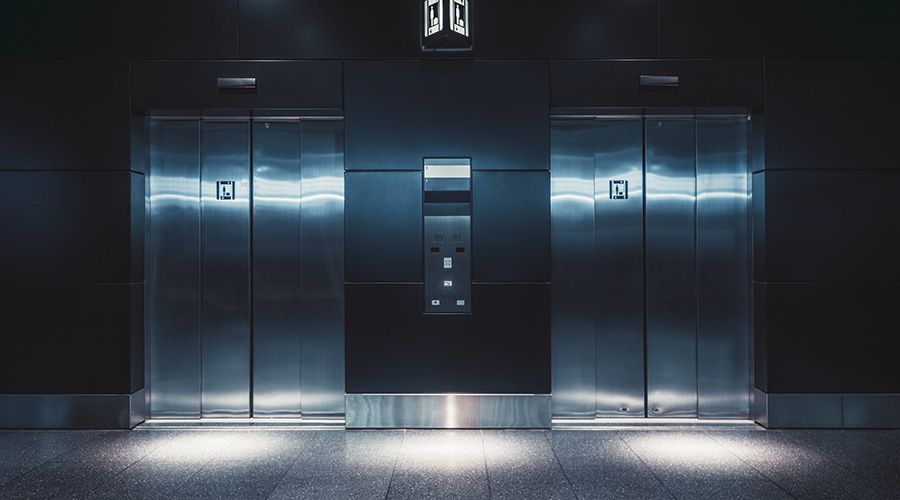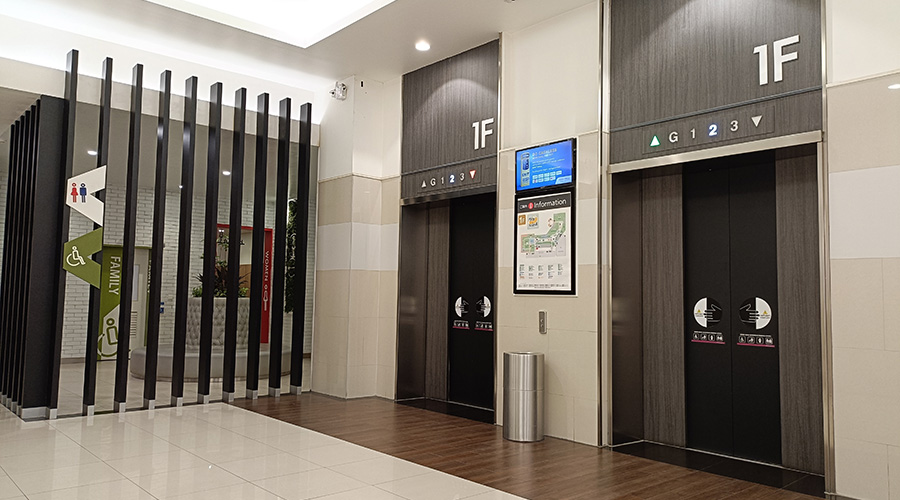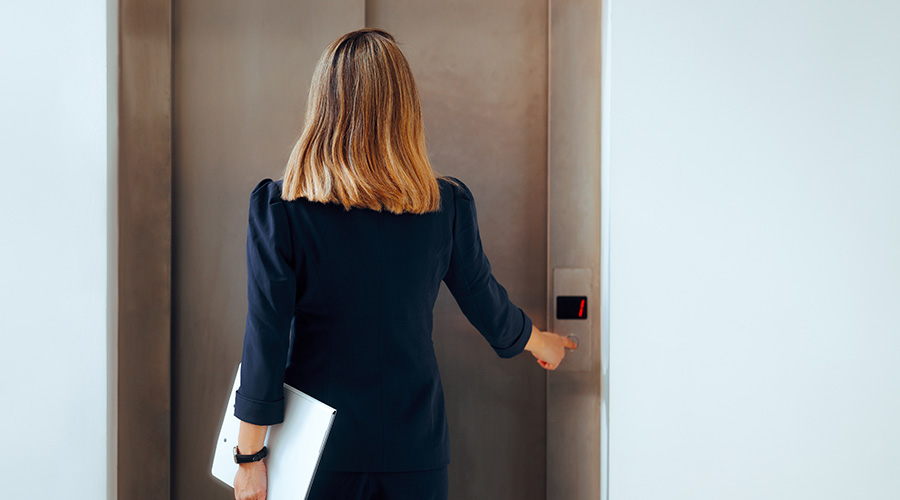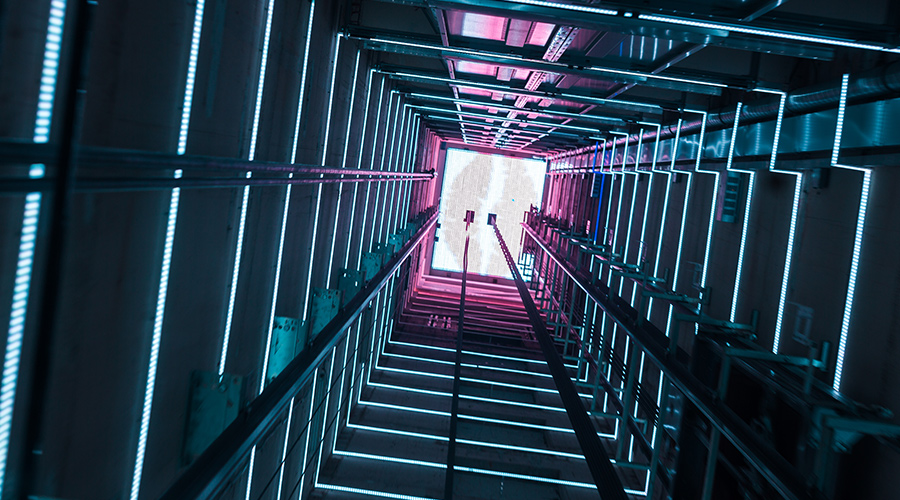Evaluating Existing Elevator System
Once tenant requirements, competing properties in the area, and elevator technology purchases have been considered, it is time for the second critical step in planning a major elevator modernization. This involves an accurate evaluation of the condition of the existing elevator system, the remaining useful service life of major components such as the hoist machine, measurement of the existing ride quality, potential for energy conservation, and potential for reduction in electromagnetic interference that builds up over time as buildings age.
Aesthetic considerations such as renovation of elevator lobbies and, in particular, an upgrading of elevator cab interior finishes to a contemporary appearance have a major impact on the proper selection of equipment for modernization. Once this survey is complete, the results obtained during the analysis of building use and tenant requirements can be overlaid to accurately determine the proper scope of an elevator modernization.
Based on a modernization plan derived from the results of a tenant analysis and survey of the existing equipment, it is common that a number of building upgrades also will be required. Since the elevator or escalator equipment was originally installed, or previously modernized, changes will have occurred within the building, life safety, and elevator safety codes. Some of these changes will require certain elevator components to be included as part of the equipment modernization. Other changes, related to changes within elevator safety codes, may be required to existing building systems as a result of modernizing the equipment.
Armed with the results obtained from a tenant analysis and analysis of competitive properties in the area, an existing equipment survey, interest in reducing energy consumption, code compliance evaluation, aesthetic goals, and long-term asset preservation and enhancement goals, a solid modernization plan can be developed. This plan is then used to develop the appropriate specifications for the modernization and necessary related building work needed for code compliance as a result of the equipment modernization.
An important part of any elevator modernization is replacement of the cab interior finishes. It provides visual confirmation that the reduced service levels during the extensive modernization process brought substantial elevator improvements. By enhancing a building's image, it should also help attract and retain tenants. And because hoist machines have maximum design limits on suspended load, aesthetic upgrades influence whether a hoist machine can be retained or must be replaced.
Depending upon the building's size and the number of elevators to be modernized, the modernization process can take a substantial amount of time, up to a year or more. Both prior to the start of the project and while modernization is proceeding, good communication with tenants — about the benefits they will experience once the work is done and the aesthetic upgrades that are part of the modernization — significantly reduces frustration caused by the interim reduction in elevator service.
Modernization of existing elevator and escalator systems is a major undertaking in an occupied building and should be carefully planned to minimize disruption to tenants. What's more, it's a complex matter to determine the appropriate scope of equipment replacement or reconditioning, to understand code issues associated with modernization, to prepare the necessary specs, to bid and negotiate the contract, and to manage the modernization process. Addressing all the planning issues is not as simple as soliciting a proposal from some elevator service providers. Modernization is best planned and managed by specialist consultants who consider all the aspects outlined above, are knowledgeable about systems and technologies available from all elevator manufacturers, and can recommend the appropriate scope of work.
Jay Popp is executive vice president, international, Lerch Bates.
Related Topics:






